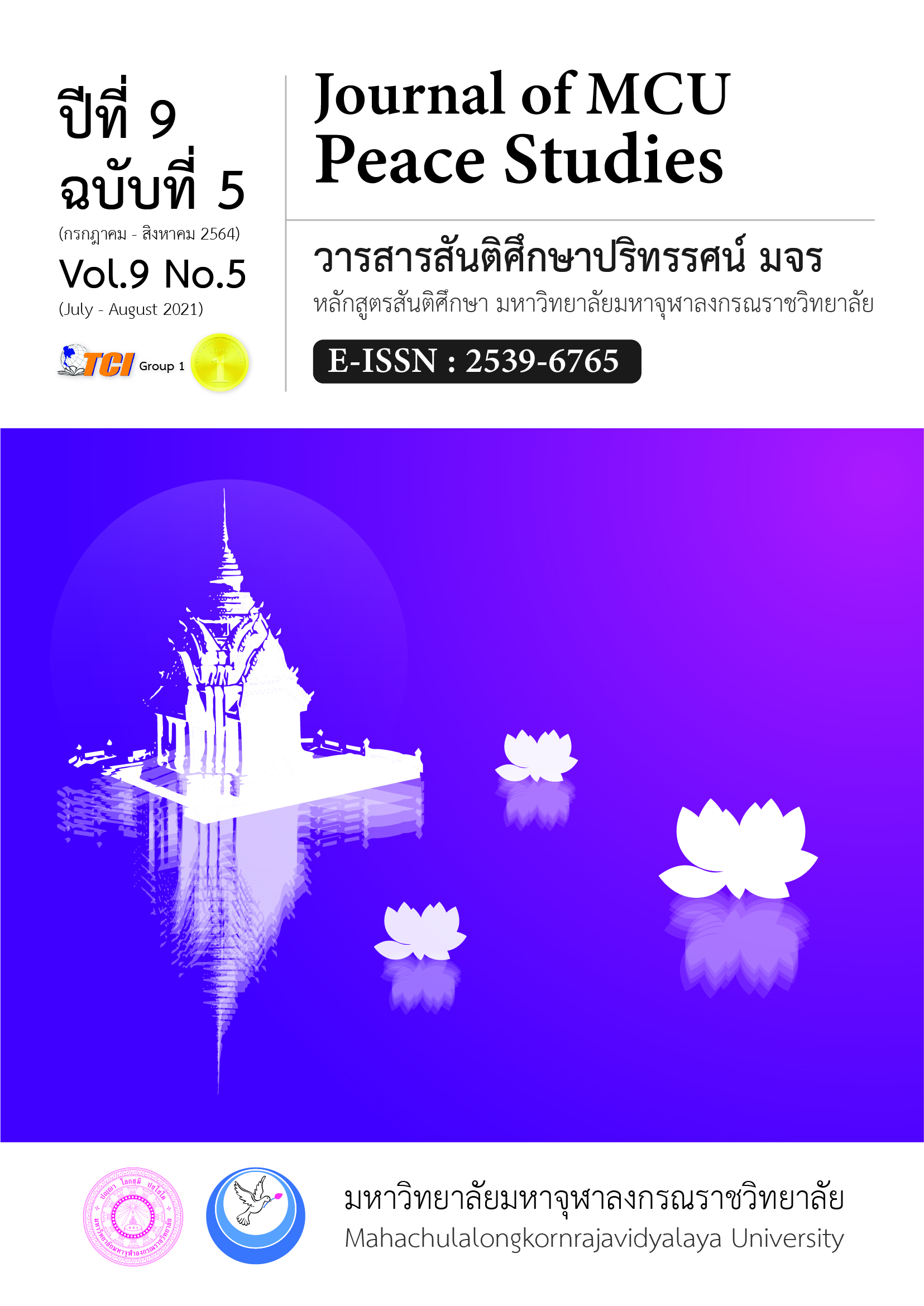รูปแบบการพัฒนาสมรรถนะผู้ดูแลผู้พิการทางสติปัญญา
Main Article Content
บทคัดย่อ
บทความวิจัยนี้มีวัตถุประสงค์เพื่อ 1) ศึกษาสภาพปัจจุบันและสภาพปัญหาของผู้ดูแลผู้พิการ ทางสติปัญญา 2) วิเคราะห์ปัจจัยในการพัฒนาสมรรถนะของผู้ดูแลผู้พิการทางสติปัญญา และ 3) เสนอรูปแบบการพัฒนาสมรรถนะของผู้ดูแลผู้พิการทางสติปัญญา เป็นการวิจัยแบบผสานวิธีระหว่างการวิจัยเชิงปริมาณและการวิจัยเชิงคุณภาพ กลุ่มตัวอย่างที่ใช้ในการวิจัย คือ บุคลากรในภาครัฐ ภาคเอกชน นักวิชาการ และอาจารย์ผู้เชี่ยวชาญที่มีบทบาทสำคัญที่เกี่ยวข้องกับการพัฒนาคุณภาพชีวิตคนพิการ จำนวน 320 คน โดยใช้โปรแกรมสำเร็จรูปทางสถิติในการวิเคราะห์ โดยมีตัวแปรประจักษ์ทั้งสิ้น 16 ตัว ซึ่งผู้วิจัยใช้วิธีการกำหนดกลุ่มตัวอย่างจำนวน 20 คน โดยการสัมภาษณ์เชิงลึก ผลการวิจัยพบว่า 1) ระดับสภาพปัจจุบันและสภาพปัญหาของผู้ดูแลผู้พิการทางสติปัญญา ในภาพรวมอยู่ในระดับมาก เมื่อพิจารณาเป็นรายด้าน พบว่า ด้านความรู้มีค่าเฉลี่ยสูงสุดอยู่ในระดับมากที่สุด รองลงมาคือ ด้านลักษณะของบุคคล มีค่าเฉลี่ยอยู่ในระดับมากที่สุด ด้านทักษะ มีค่าเฉลี่ยอยู่ในระดับมากที่สุด และด้าน การอบรมพัฒนา มีค่าเฉลี่ยอยู่ในระดับมากที่สุด ตามลำดับ 2) การพัฒนาสมรรถนะของผู้ดูแลผู้พิการทางสติปัญญา พบว่า ทักษะ มีอิทธิพลโดยรวมต่อรูปแบบการพัฒนาสมรรถนะผู้ดูแลผู้พิการทางสติปัญญามากที่สุด รองลงมาคือ ความรู้ การอบรมพัฒนา และคุณลักษณะของบุคคล ตามลำดับ 3) รูปแบบการพัฒนาสมรรถนะของผู้ดูแลผู้พิการทางสติปัญญา ประกอบด้วย 1) หลักการมีคุณธรรมจริยธรรม 2) หลักความเป็นมืออาชีพ และ 3) หลักความรับผิดชอบของรูปแบบการพัฒนาสมรรถนะของผู้ดูแลผู้พิการทางสติปัญญา
Article Details
ทัศนะและความคิดเห็นที่ปรากฏในบทความในวารสาร ถือเป็นความรับผิดชอบของผู้เขียนบทความนั้น และไม่ถือเป็นทัศนะและความรับผิดชอบของกองบรรณาธิการ ยินยอมว่าบทความเป็นลิขสิทธิ์ของวารสาร
เอกสารอ้างอิง
Best, J. (1977). Research in Education. New Jersey: Prentice Hall, Inc.1977.
Boonkong, P., Punpean, C., & Khumchomphu, C. (2007). The development of rehabilitation service systems for the mobility disabled people at Contract Primary Care Unit of Muang Sakon Nakhon, Sakon Nakhon. Sakon Nakhon: Sakon Nakhon Hospital The health care committee for the disabled, Sakon Nakhon Hospital. 2.
Chareonwongsak, K. (2014). A professional do not be a profession. Retrieved November 17, 2019, from http://www.kriengsak.com/A-professional-Do-not-be-a-profession
Grace, J. B. (2008). Structural equation modeling for observational studies. Journal of Wildlife Management, 72(1), 14-22.
Methawikul, M. (2014). Study on development of models and operational guidelines of a disability services centre. Bangkok: Graduate School Department of Public Administration Siam University.
Promchan, S. (2015). Development of a system of care for the disabled as a health partner. Journal of the College of Nursing and Public Health Network, Southern Region, 2(1), 37-51.
Sansern, R. (2013). Development of a care system for the disabled by using family and community as the base. Journal of Nursing and Education, 6(3), 25-41.
Sawatsri, U. (2009). The history of social model of disability and Thai society. Retrieved November 18, 2019, from https://prachatai.com/journal/2009/09/25851
Schulze, M. (2009). Understanding the UN Convention of Person with Disabilities. Retrieved November 18, 2019, from https://www.internationaldisabilityalliance.org/sites/default/files/documents/hi_crpd_manual2010.pdf
World Health Organization. (2007). Atlas global resources for person with Intellectual Disabilities. Retrieved November 17, 2019, from http://www.who.int/mental_health/evidence/atlas_id_2007.pdf
World Health Organization. (2011). World Report on Disability 2011. Retrieved November 17, 2019, from http://whqlibdoc.who.int/publications/2011/9789240685215_eng.pdf


